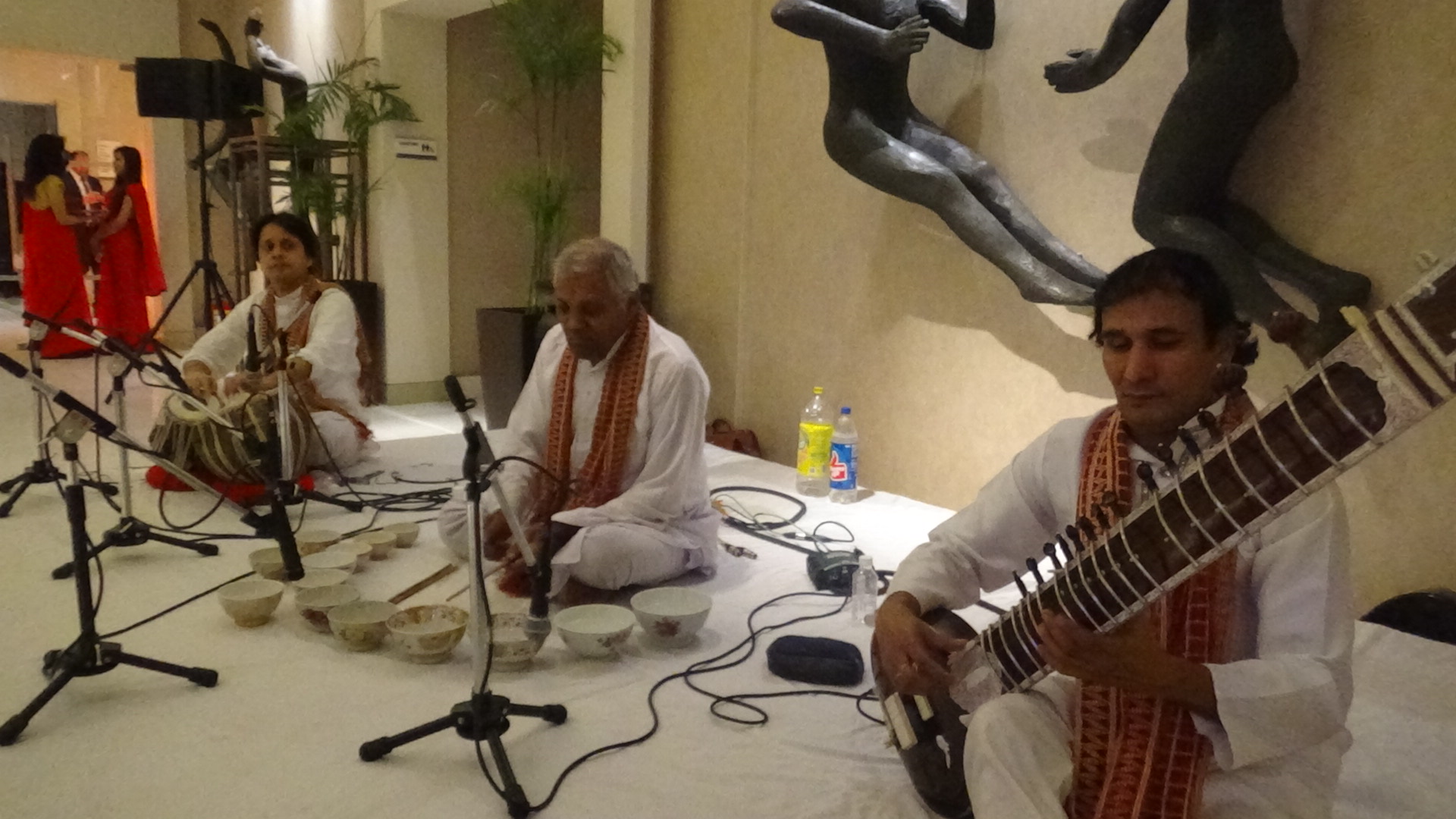\r\n A sitar can have 18, 19, 20, or 21 strings. Six or seven of these are played strings which run over curved, raised frets, and the remainder are sympathetic strings (tarb, also known as taarif or tarafdaar) which run underneath the frets and resonate in sympathy with the played strings. These strings are generally used to set the mood of a raga at the very beginning of a presentation. The frets, which are known as pardÄ or thaat, are movable, allowing fine-tuning. The played strings run to tuning pegs on or near the head of the instrument, while the sympathetic strings, which are a variety of different lengths, pass through small holes in the fretboard to engage with the smaller tuning pegs that run down the instrument's neck.
\r\n\r\n
\r\n\r\n The instrument has two bridges: the large bridge (badaa goraa) for the playing and drone strings and the small bridge (chota goraa) for the sympathetic strings. Its timbre results from the way the strings interact with the wide, sloping bridge. As a string reverberates its length changes slightly as its edge touches the bridge, promoting the creation of overtones and giving the sound its distinctive tone. The maintenance of this specific tone by shaping the bridge is called jawari. Many musicians rely on instrument makers to adjust this.
\r\n\r\n
\r\n\r\n Materials used in construction include teak wood or tun wood (Cedrela toona), which is a variation of mahogany, for the neck and faceplate (tabli), and calabash gourds for the resonating chambers. The instrument's bridges are made of deer horn, ebony, or very occasionally from camel bone. Synthetic material is now common as well.
\r\n\r\n
\r\n\r\n For more info visit us at https://activemusic.in/sitar-player/
\r\n\r\n
\r\n\r\n or call us at 91-9313770610




